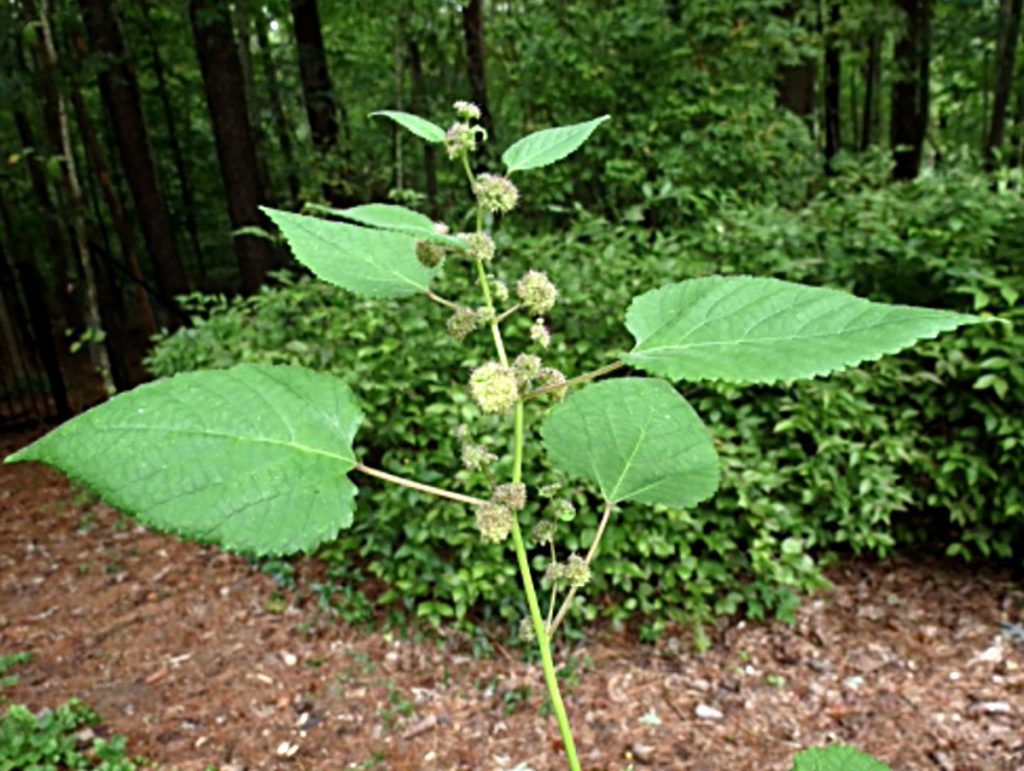The weather has been wonderful for the last couple of years for growing weeds with warm winters, lots of rain and early springs…their dream come true. I have enjoyed it, too. But for us that can also become a big problem when trying to maintain a garden…one step forward and several steps backwards. So, this seems like an appropriate time to write an article on a few facts about weeds including one of the newest and worse one of all, the Mulberry Weed…our nightmare come true.
Like flowers, most weeds fall into one of two categories either annual or perennial. Annual weeds complete their life cycle in one season and at the end, produce seeds to ensure future weed population. There are both cool-season and warm-season weeds. Cool-season weeds like Chickweed and Henbit, begin to germinate when soil temperature falls below 55 degrees and will complete their life cycle in the spring when warmer weather begins. Warm-season weeds like Chamberbitter and Spotted Spurge, begin to germinate when soil temperatures rise above 55 degrees and will complete their life cycle when cool weather begins. All these weeds can be controlled by pulling them, using pre-emergent herbicides before germination, and post-emergent when you see them growing.
Perennial weeds like Carolina Horsenettle and Yellow Woodsorrel, also called Yellow Oxalis, once established in the landscape, will survive for years. They can reproduce through many different means including seeds and underground structures; and, can only be controlled by pulling or digging them up or by post-emergent herbicides.
The most invasive weed I have at Willowdale and my hardest to control is the Mulberry Weed also known as Hairy Crabweed, botanical name Fatoua villosa. Once this weed is introduced to your garden, you’ll never forget the name! It is a summer annual that is fairly new to our area. It was first discovered in the late 1700´ s in Japan and believed to have hitched a ride on some imported product during WWII. It was identified in Louisiana around 1962 but little was heard of it for the next 30 years. Sometime in the mid 1990’s it hitched another ride on some nursery products and was distributed all across the southern states. A professor at Clemson once said that it was believed to have been introduced to South Carolina from a nursery in North Carolina when products were shipped to our local nurseries.
Needless to say, this summer annual grows everywhere in the garden and starts germinating in temperatures from 60 to 90 degrees from seeds that can be good for at least 2 years. So, how can you control this out-of-control weed?
Heavy mulching is the first step but does not give complete control. And if you have a large garden like I do, it is difficult to mulch everything before the seeds start germinating. If hand pulling, get it early! Learn to identify the seedling and pull it as soon as you see the ´seed leaves´, the first leaves, also known as ´cotyledon´. It may be easier to identify the Mulberry Weed when you see the first ´true leaves´. After that, it starts to set and drop seeds immediately and the nightmare begins! It does respond to chemicals but hand pulling will still be necessary since it spreads so quickly…and, always be ready to do battle! ♦


